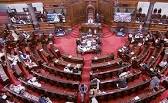As the second-highest constitutional post in the Indian government, the Vice President of India is a crucial figure in the country’s political system. In this article, we will discuss the intricacies of this prestigious post, exploring the role of the Vice President, their constitutional duties, and the challenges they face.

Who is the Vice President of India?
India’s current Vice President is Venkaiah Naidu, a seasoned politician with a wealth of experience in government affairs. Naidu assumed office on August 11, 2017, and has since been an important figure in Indian politics. Before taking on the role of Vice President, Naidu served as Minister of Information and Broadcasting, Minister of Urban Development, and Minister of Parliamentary Affairs.
Selection process of the Vice President
The Vice President of India is selected through an electoral college system consisting of members of both the Lok Sabha and Rajya Sabha. The candidate who secures the majority of votes is appointed as Vice President.
Duties of the Vice President of India
The Vice President of India has several constitutional duties, the most important of which is presiding over the Rajya Sabha, the upper house of the Indian Parliament. The Vice President also acts as the President of India in the absence of the President, and has the power to assent to bills passed by Parliament.
Role of the Vice President in the Indian political system
The Vice President is an important figure in the Indian political system, serving as a bridge between the executive and legislative branches of government. While the President of India is the head of state, the Vice President is the head of the Rajya Sabha, and plays a key role in ensuring the smooth functioning of Parliament. Unlike the President, the Vice President is not directly involved in day-to-day government affairs, but rather serves as a neutral arbiter of parliamentary proceedings.
Challenges faced
He faces a number of challenges, including the need to balance political neutrality with active participation in government affairs. Additionally, the Vice President must ensure the smooth functioning of the Rajya Sabha, which can be a challenging task given the diversity of political opinions and interests represented in the upper house. Finally, the Vice President must uphold the integrity of the office and the institution of the Vice Presidency, which can be a difficult task in a political system that is often rife with corruption and controversy.
Important Links